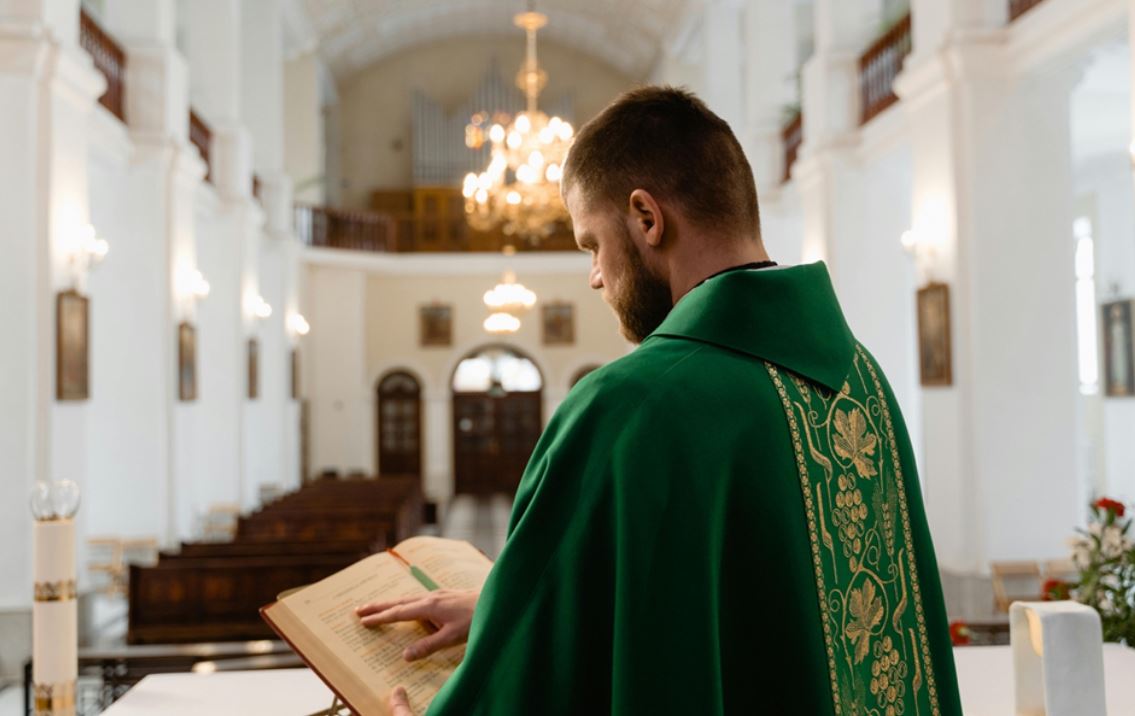
The Origin and Meaning of Catholic Liturgical Vestments
Catholic liturgical vestments have a rich history and deep symbolism within the Catholic Church. These garments are worn by clergy during religious ceremonies and serve to enhance the spiritual experience for both the clergy and the congregation. In this article, we will explore the origin and meaning of Catholic liturgical vestments, shedding light on their significance and the traditions they represent.
Origins of Liturgical Vestments
The use of special garments for religious ceremonies dates back to ancient times. In the early Christian Church, clergy members wore simple garments similar to those worn by the general populace. However, as the Church grew and developed its own distinct rituals and practices, the need for more elaborate vestments arose.
The development of liturgical vestments can be traced to the early centuries of Christianity, when the Church began to adopt elements from the Roman Empire’s ceremonial attire. Over time, these garments evolved to reflect both the spiritual significance of the priesthood and the cultural influences of the regions in which they were used.
Meaning and Symbolism
Each piece of liturgical vestment carries its own symbolism, reflecting aspects of the Christian faith and the role of the clergy within the Church. Here are some of the most common vestments and their meanings:
1. Alb
The alb is a long, white robe worn by clergy members as a symbol of purity and holiness. It represents the baptismal garment and serves as a reminder of the priest’s call to lead a life of righteousness.
2. Chasuble
The chasuble is a sleeveless outer garment worn by priests during Mass. It symbolizes the yoke of Christ and the priest’s role as a shepherd of his flock.
3. Stole
The stole is a long, narrow strip of fabric worn around the neck by priests and deacons. It represents the authority and responsibility of the clergy to administer the sacraments and proclaim the Word of God.
4. Mitre
The mitre is a ceremonial headdress worn by bishops and abbots. It symbolizes the authority and office of the bishop as a successor to the apostles.
5. Cope
The cope is a large, cape-like garment worn by clergy for processions and other liturgical ceremonies. It symbolizes the priest’s role as a servant of God and a representative of the Church.
Haftina USA: A Trusted Source for Liturgical Vestments
For clergy members and religious institutions seeking high-quality liturgical vestments, Haftina USA is a trusted source. With a commitment to craftsmanship and attention to detail, Haftina offers a wide range of vestments suitable for various liturgical occasions.
From traditional albs and stoles to ornate chasubles and copes, Haftina USA provides vestments that are both aesthetically pleasing and spiritually meaningful. Their dedication to excellence ensures that clergy members can perform their sacred duties with confidence and reverence.
In addition to their standard offerings, Haftina USA also offers custom vestment design services, allowing clergy members to create garments that reflect their individual style and preferences. With Haftina USA, clergy members can trust that they are receiving vestments of the highest quality, crafted with care and precision.
In conclusion, Catholic liturgical vestments have a rich history and deep symbolism within the Church. From their ancient origins to their modern-day significance, these garments serve as powerful symbols of faith and devotion. For clergy members in need of quality vestments, Haftina USA is a reliable choice, offering a wide selection of garments designed to enhance the spiritual experience of both the clergy and the congregation.


